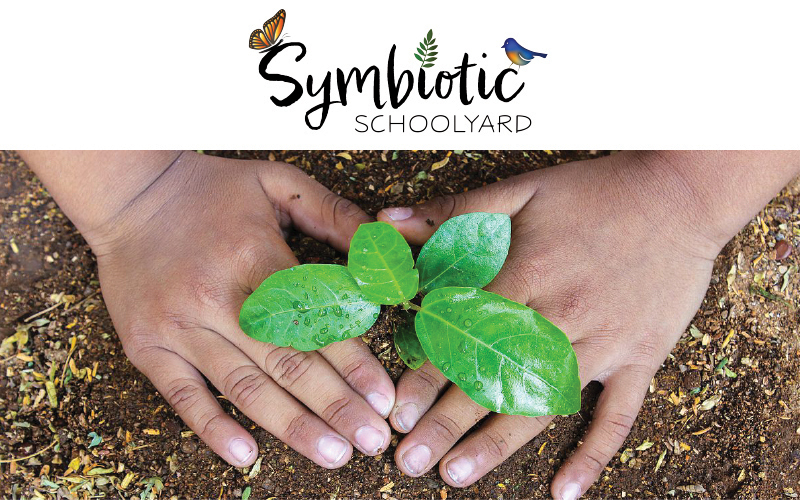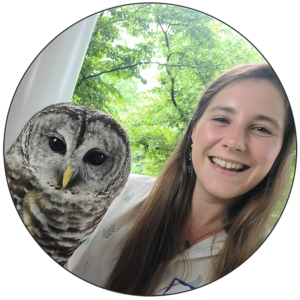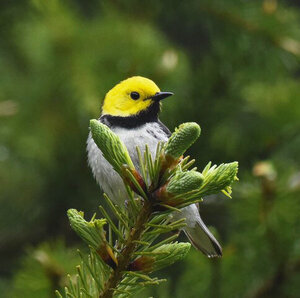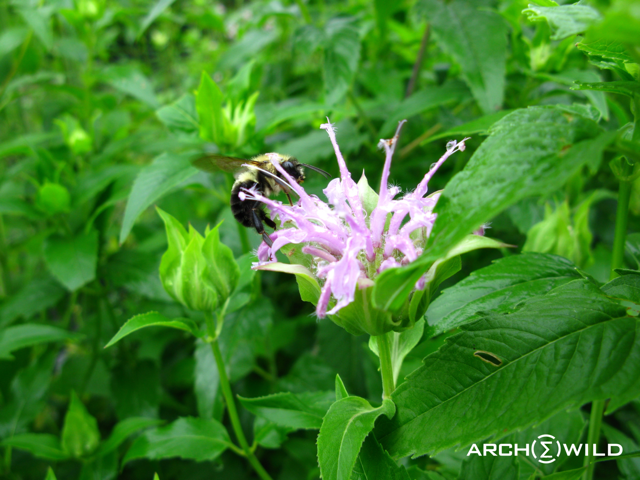Taking a Local Conservation Approach National: Meet Symbiotic Schoolyard, the new science unit you’ll want in your middle schoolers’ classrooms.
Janneke Petersen is looking to spark a nationwide movement of middle school science teachers restoring biodiversity in their schoolyards with their students. Keep reading to learn how you can get involved.
Est. Read Time: 7 minutes

Janneke Petersen was raised as what can only be described as a “free-range child.” Growing up in Northern California, she looked for every opportunity to be outdoors and spent her days playing outside and exploring the open field behind her home. With her parents’ blessing, she ran free and came and went as she pleased.
School was the opposite experience. She felt trapped by the walls around her, and she regularly wondered why she couldn’t just be outside. Despite her high school being surrounded by hills and oak savannah, she can’t remember a single time when one of her classes ventured outdoors to learn about them. Janneke is working to ensure that future generations of students don’t have the same experience she did. She created Symbiotic Schoolyard, an 8-week, Next Generation Science Standards-Aligned Ecosystem Unit where middle school students become restoration ecologists to increase the biodiversity of their own schoolyard. At the core of the curriculum, which has already received rave reviews from teachers and students alike, is a hands-on native species planting project. Adaptable to any schoolyard and ecoregion (and she really means any), she is working to get her Schoolyard Restoration Unit into, or perhaps out of, classrooms across the nation.
Janneke studied environmental science in college and earned her master’s degree in Science Curriculum and Instruction with a focus on Outdoor Science Learning from the University of Washington. Her studies praised project-based learning as the most effective teaching style and touted its value to environmental education. She was eager to implement this work into her lessons as a middle school science teacher after graduating. She envisioned helping to mold her students into “change-makers,” ready to tackle all the Seattle-based environmental problems they could identify. For all the hype it had received in her studies, implementing project-based learning was much harder in practice. A serious lack of support, resources, and curriculum for this teaching style dampened Janneke’s visions of empowering her students through real-world projects.
Unsure what her next steps would be, she found inspiration in an unlikely place: a neglected patch of her schoolyard covered by invasive English ivy. She thought to herself, “how cool would it be if they [her students] could pull all that out and replace it with native plants?” Not only that, but what if this planting project actually anchored a core science unit that all middle schoolers are required to be taught?
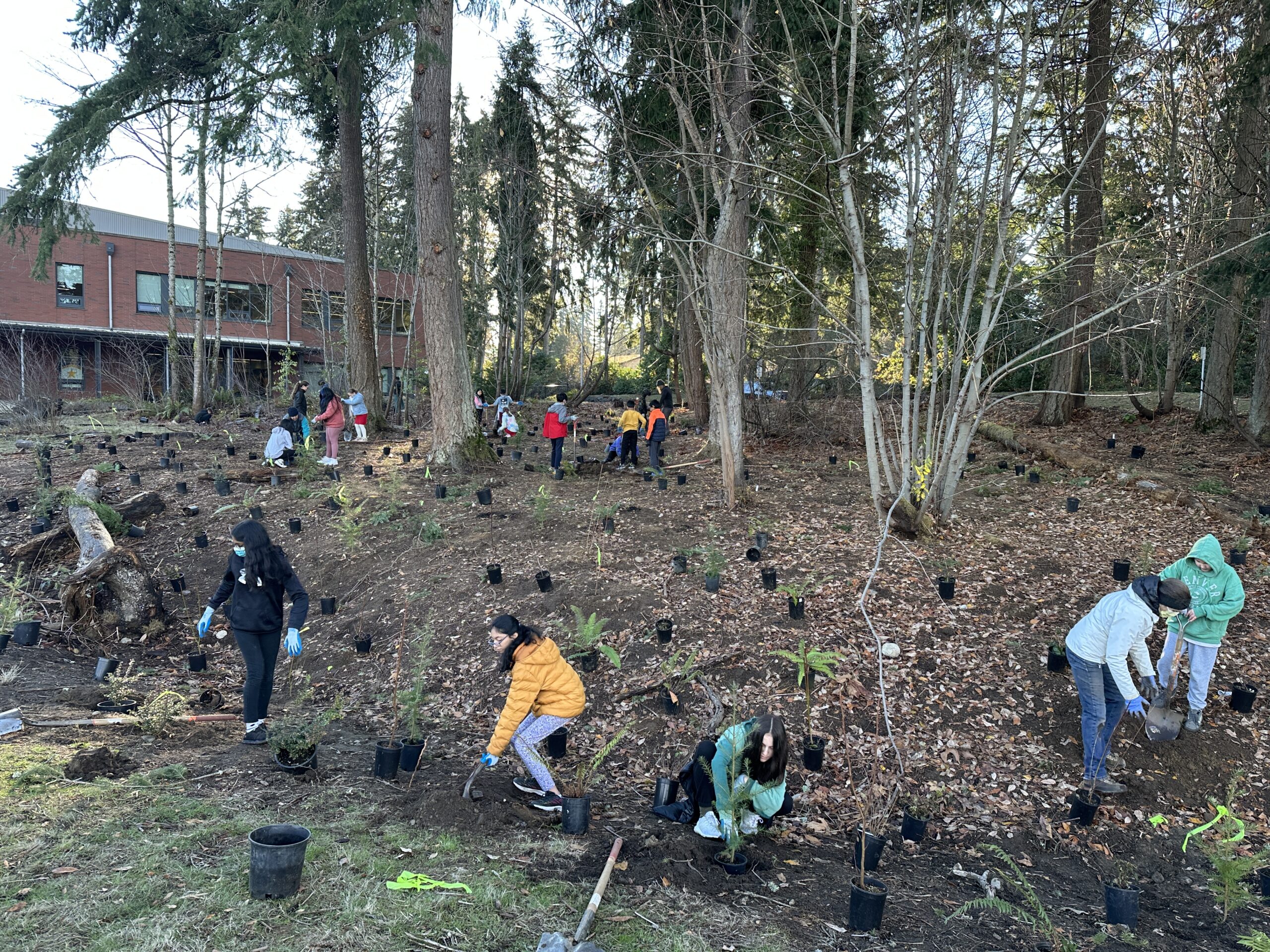
Janneke could not find any satisfactory curricula that highlighted local ecosystems, or any ecosystem in the United States for that matter. The “closest” option was a unit about restoration ecology 4,500 miles away in Costa Rica. If students were tasked with being restoration ecologists for biodiversity projects in Costa Rica, she thought, why couldn’t they do the same for the native species right outside their windows?
It quickly became clear to Janneke that to get what she was looking for, she’d have to create it herself. With this seed of an idea, she left teaching to develop the curriculum for a place-based ecosystem unit that centered on a native species planting.
 Janneke wasn’t well versed in native plants or how to go about planting them when she first started out, so she pitched her idea to the Washington Native Plant Society (WNPS). WNPS was immediately on board as Janneke's vision supported their mission of promoting the appreciation and conservation of Washington's native plants and their habitats through study, education, and advocacy. Through the generous donation of Jim and Birte Falconer (WNPS members) and (later) a state grant, they secured the needed funding to make vision a reality. From this partnership the Youth Ecology Education through Restoration (YEER) program was born. Led and funded by WNPS with extensive involvement from Janneke, the program works with public schools around Washington state to plant native plants in schoolyards. Since it was founded, YEER has recruited 14 teachers across 7 schools, introducing the program to thousands of students. The key to the program is WNPS’s extensive network of trained volunteers who work directly with the schools to implement the planting projects. Teachers can rely on their expert knowledge to ensure the plantings incorporate the correct species and run smoothly. The program has been a huge success: participating students say it makes science their favorite class in school and have planted 6,000 native plants to date.
Janneke wasn’t well versed in native plants or how to go about planting them when she first started out, so she pitched her idea to the Washington Native Plant Society (WNPS). WNPS was immediately on board as Janneke's vision supported their mission of promoting the appreciation and conservation of Washington's native plants and their habitats through study, education, and advocacy. Through the generous donation of Jim and Birte Falconer (WNPS members) and (later) a state grant, they secured the needed funding to make vision a reality. From this partnership the Youth Ecology Education through Restoration (YEER) program was born. Led and funded by WNPS with extensive involvement from Janneke, the program works with public schools around Washington state to plant native plants in schoolyards. Since it was founded, YEER has recruited 14 teachers across 7 schools, introducing the program to thousands of students. The key to the program is WNPS’s extensive network of trained volunteers who work directly with the schools to implement the planting projects. Teachers can rely on their expert knowledge to ensure the plantings incorporate the correct species and run smoothly. The program has been a huge success: participating students say it makes science their favorite class in school and have planted 6,000 native plants to date.
Symbiotic Schoolyard is Janneke's strategy for encouraging teachers across the country to plant native plants in their schoolyard as a part of a place-based ecosystem unit. Every middle school teacher in the country is required to teach a unit on ecosystems. What makes the Schoolyard Restoration Unit unique, though, is it uses each school’s own local ecosystem for every lesson and, just like YEER, the unit culminates in a native species planting project. A critical aspect of the curriculum for Janneke is ensuring that students feel empowered and believe they are part of the solution throughout the entire process. This is particularly powerful given the pervasive feelings of dread and helplessness that many school-aged children have about the climate crisis they are inheriting. From start to finish, Symbiotic Schoolyard is fully action-focused and encourages students to take the learning process into their own hands. Within the first twenty minutes of the first lesson, students are given their challenge for the unit: increase the biodiversity of their schoolyard. But, they aren’t told about the planting project – as students work through the unit, they are guided to come to that realization for themselves (Janneke spends a lot of time coaching teachers through how to not spill the beans in their excitement).
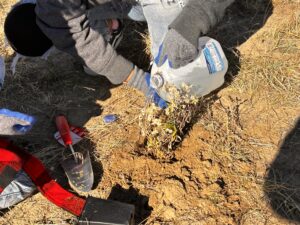 Symbiotic Schoolyard’s curriculum package has everything teachers need to deliver the unit: a preparation guide, 13 detailed lesson plans, all the handouts students need for the entire unit, PowerPoint presentations to accompany lesson activities, two quizzes, a final assessment, grading rubrics, and access to two virtual professional development workshops. Not only that, but teachers also receive personal consultations with Janneke throughout the course of the unit. While she may not know every plant to put in every schoolyard across the country, she does have an extensive nation-wide list of people, organizations, and resources (that is constantly expanding) to connect teachers with to implement planting projects. She can also help to identify ideal places to site the restoration project (she means it – Symbiotic Schoolyard will work in any school) and work with educators through the unique situations their schools might face. The Symbiotic Schoolyard package costs $350, which can be billed as professional development. However, Janneke wants Symbiotic Schoolyard to be available to everyone at a price they can afford. If $350 presents a hardship to a teacher paying out of pocket, she encourages them to email her (contact information below).
Symbiotic Schoolyard’s curriculum package has everything teachers need to deliver the unit: a preparation guide, 13 detailed lesson plans, all the handouts students need for the entire unit, PowerPoint presentations to accompany lesson activities, two quizzes, a final assessment, grading rubrics, and access to two virtual professional development workshops. Not only that, but teachers also receive personal consultations with Janneke throughout the course of the unit. While she may not know every plant to put in every schoolyard across the country, she does have an extensive nation-wide list of people, organizations, and resources (that is constantly expanding) to connect teachers with to implement planting projects. She can also help to identify ideal places to site the restoration project (she means it – Symbiotic Schoolyard will work in any school) and work with educators through the unique situations their schools might face. The Symbiotic Schoolyard package costs $350, which can be billed as professional development. However, Janneke wants Symbiotic Schoolyard to be available to everyone at a price they can afford. If $350 presents a hardship to a teacher paying out of pocket, she encourages them to email her (contact information below).
There are a lot of reasons why everyone should want Symbiotic Schoolyard taught in schools. While there are some schools incorporating native landscaping and pollinator gardens on their properties, students are rarely involved, and when they are, it’s only at the surface-level. With the Schoolyard Restoration Unit, students get the best of both worlds, gaining the academic background and scientific understanding that adds meaning, intention, and sustainability to their hands-on native planting experience. The curriculum is the real deal, too: Janneke spent 5 years writing it, and it has gone through iterative design after 3 years of field testing and critique by teachers in the YEER program. The Schoolyard Restoration Unit meets Next Generation Science Standards (NGSS), making it appropriate for delivery in public and private schools alike.
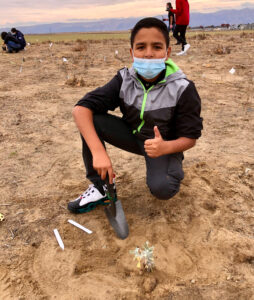 It isn’t just important for teachers and middle school-aged children, either: Symbiotic Schoolyard’s impacts extend well beyond the classroom. Schoolyards, Janneke points out, are often ecological deserts. Increasing biodiversity in these spaces contributes to the Homegrown National Park network (which she learned about after reading Nature’s Best Hope by Dr. Doug Tallamy, co-founder of Homegrown National Park, while doing research for the curriculum), which benefits everything that lives around it.
It isn’t just important for teachers and middle school-aged children, either: Symbiotic Schoolyard’s impacts extend well beyond the classroom. Schoolyards, Janneke points out, are often ecological deserts. Increasing biodiversity in these spaces contributes to the Homegrown National Park network (which she learned about after reading Nature’s Best Hope by Dr. Doug Tallamy, co-founder of Homegrown National Park, while doing research for the curriculum), which benefits everything that lives around it.
Janneke’s vision of uplifting the next generation of change-makers seems to be working too. Students who have gone through the program can identify an average of 7 native plants at the end of the unit (the average before starting is 0), which they then go on to teach their families and friends, according to conversations Janneke has had with parents. Not only that, but students are pushing for change in their own homes. Several parents have reported they are now working with their kids to remove invasive species like the Himalayan blackberry from their yards. And many students have expressed excitement about doing this work for years to come. “What?! You can do this as a job?!” they ask Janneke incredulously. “I want to be a restoration ecologist when I grow up!”
Help get the word out about Symbiotic Schoolyard!
Everyone can help get the word out about Symbiotic Schoolyard.
If you’re a middle school science teacher, visit the Symbiotic Schoolyard website and reach out to Janneke for more information and a free consultation.
If you work in a school but are not a middle school science teacher, if you are the parent/guardian of a middle schooler, or even if you just know a teacher, share Symbiotic Schoolyard with them. You can forward this article or use the sample email below to reach out to the appropriate contact.
If you don’t know any teachers, go make friends with one. They’re awesome. You can also share this article and Homegrown National Park with everyone you know. The more students we have learning about and planting native species, the better off we will all be for it.
Symbiotic Schoolyard website: https://www.symbioticschoolyard.org/
Contact Janneke: symbioticschoolyard@gmail.com
Grace Hassler recently graduated from the University of Pennsylvania with a Master of Environmental Studies degree focusing on local land conservation. She loves storytelling and finding ways to connect the public with important environmental research in a way that is interesting and understandable. In her free time, you can find Grace outside participating in one of her many hobbies – whitewater kayaking, birding, mountain biking, photography, rock climbing – you name it!

